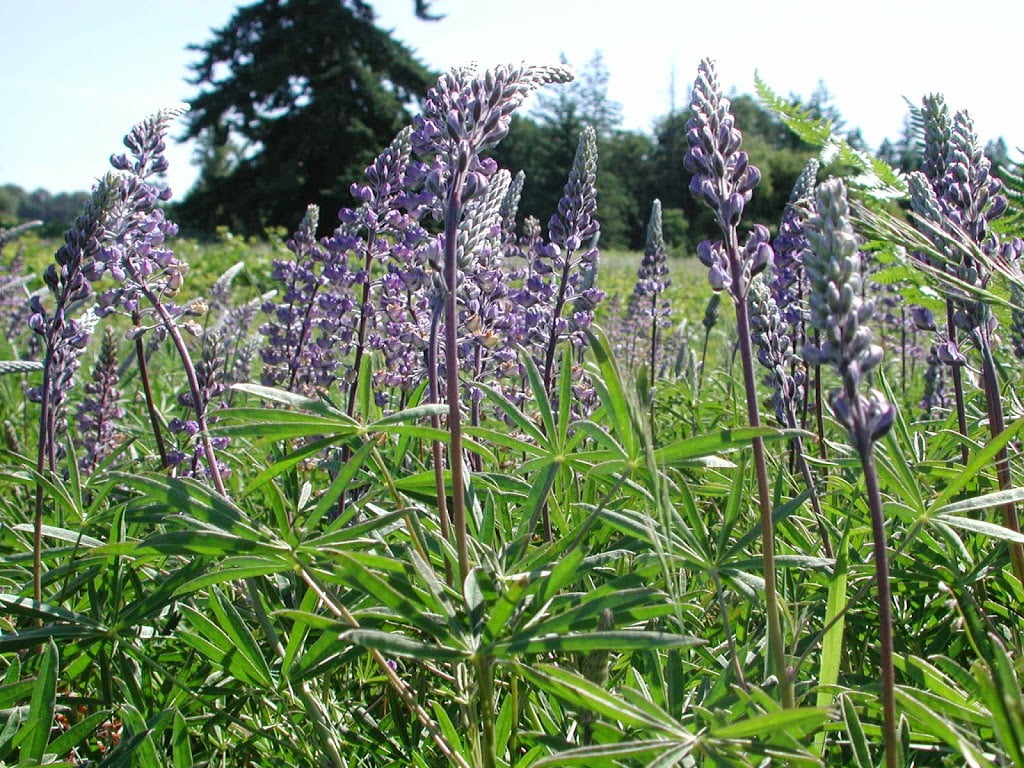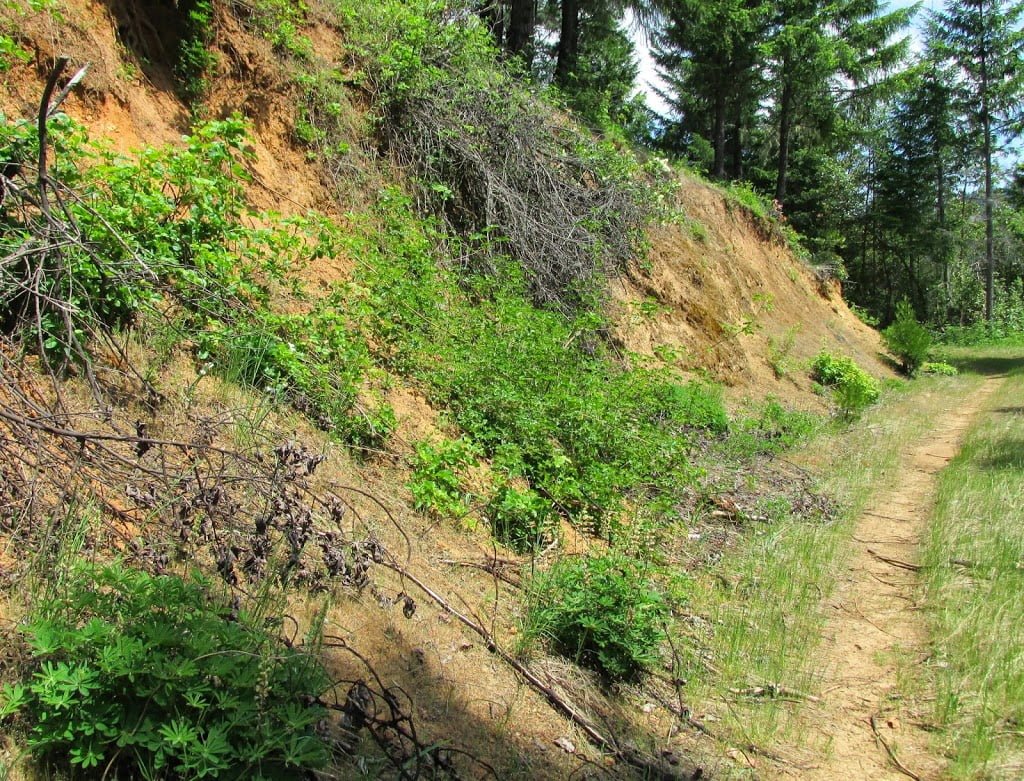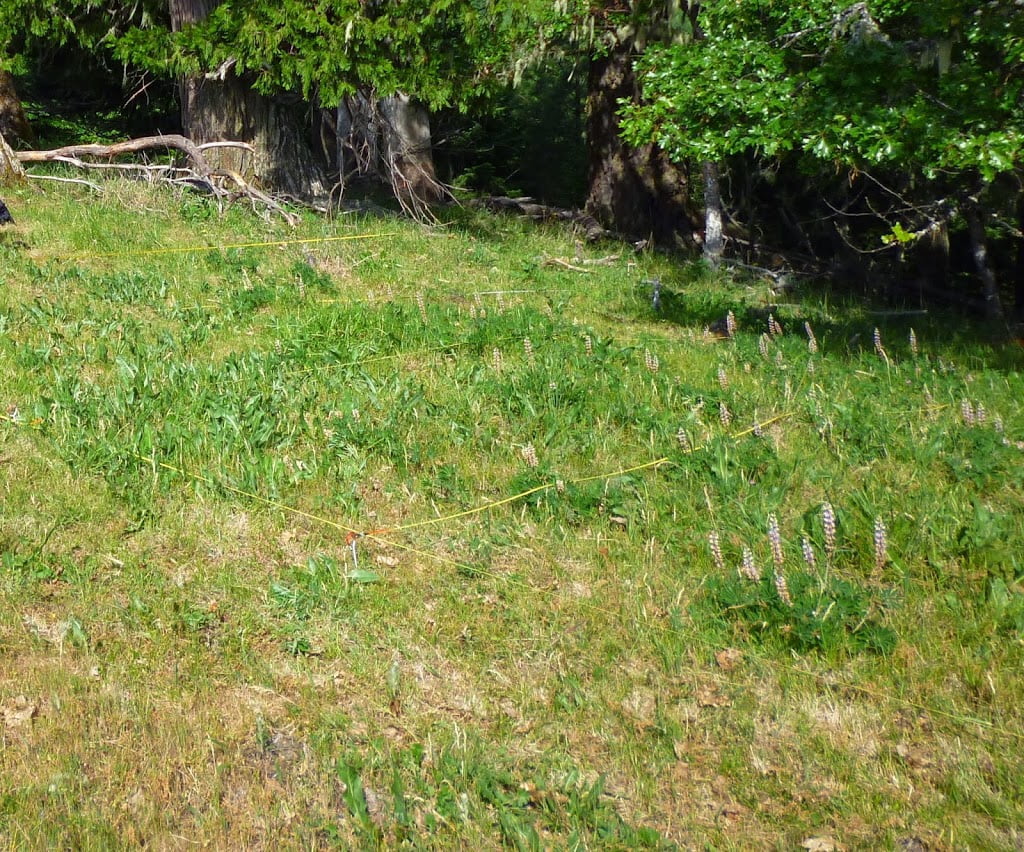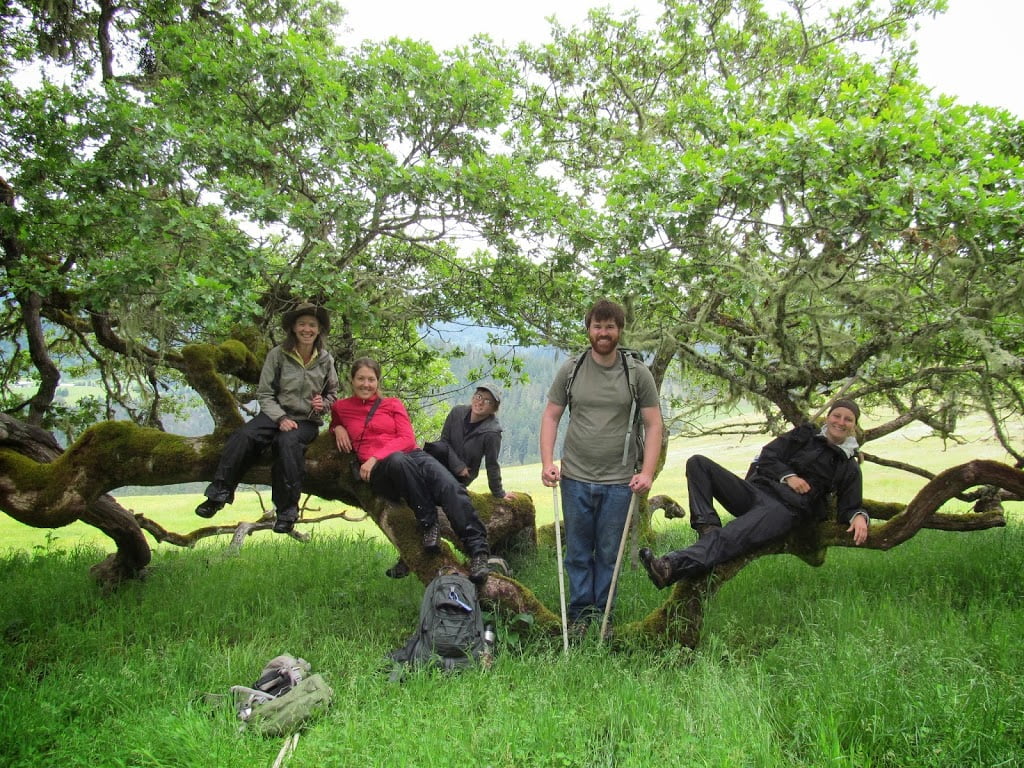Loopy for Lupine!
This past week, we took a trip down to the Umpqua River basin near Roseburg, OR to monitor Lupinus oreganus (Kincaid’s lupine), which is a federally threatened species and an obligate host plant to the endangered Icaricia icarioides fenderi (Fender’s blue butterfly). This area is home to the southernmost populations of L. oreganus. Lupinus oreganus typically occurs in native upland prairie habitat. With it’s large, upright inflorescences and dark green palmate leaves, it’s hard not to admire the grandeur of this plant. The flowers of L. oreganus range in color from bluish/purple to yellowish or cream.
 |
| Lupinus oreganus (Kincaid’s lupine) |
The goal for this project was to monitor 6 different sites where L. oreganus populations exist on land managed by the Roseburg District BLM. These sites have been monitored by IAE for the past 12 years in order to track changes in these rare southern populations and their responses to management treatments. Each morning began with a healthy dose of Oregon Sunshine (a local coffee shop in Canyonville) and a short (or sometimes long) trek out to one of our 6 field sites.
 |
| The crew hiking out to one of our field sites. Photo credit: Amy Comstock |
It was interesting to see the variability that the lupine displayed between each of our sites. At our first site, for example, the lupine population is genetically polyploid. That means that they have too many sets of chromosomes, and in this case, has resulted in a sterile population. In contrast, another one of our sites contained several plots with new seedlings and even required expansion of our monitoring area to include lupine that had spread beyond the original plots. The habitat is also variable and ranges from open meadows to roadside ditches and slopes. If you are interested in learning more about the population trends from these sites, check out IAE’s reports.
 |
| Lupine growing along a road side slope |
 |
| Polyploid lupine populations growing under oaks in a meadow |
Some of the factors that are thought to be contributing to the variability and decline of this species are human disturbance (especially near roadsides), depletion of native prairie habitat, encroachment by woody plants, and climate change. IAE has been conducting our own research at the common gardens in Corvallis to mimic the effects of climate change on L. oreganus. To learn more about climate change effects, and the experimental design at the common garden, check out this previous blog. Although our days were long and hot, you really can’t complain about this view! All in all another great and successful week.
 |
| View from our site at Callahan Meadows. Photo credit: Amy Comstock |
 |
From left to right:
Denise Giles-Johnson, Amy Comstock, Emma MacDonald, Scott Orr, and Tara Callaway |







